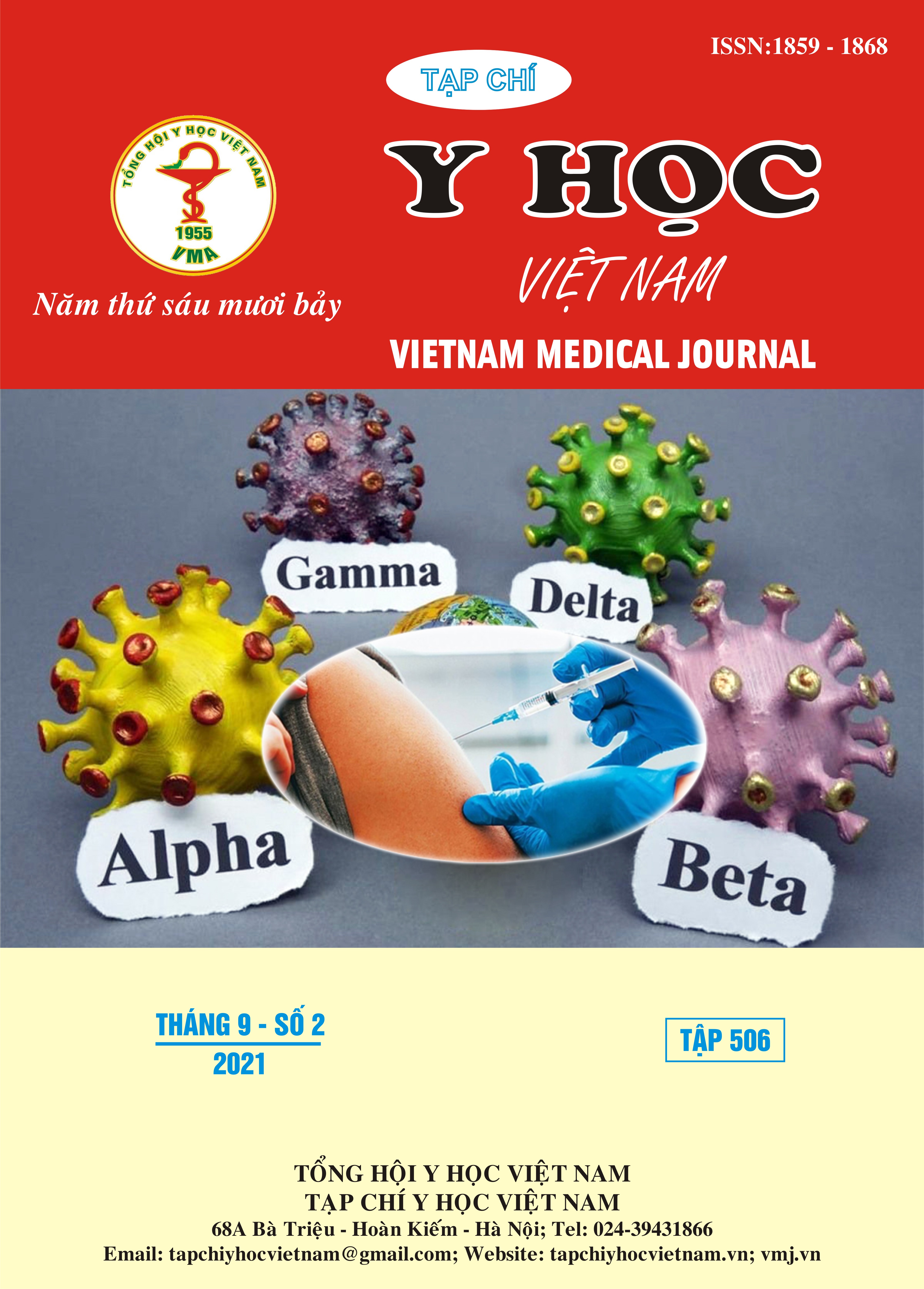SOME FACTORS RELATED TO THE RESULTS OF TREATMENT OF ACUTE RESPIRATORY TRACT INFECTIONS AT THE 24-HOUR EXAMINATION AND TREATMENT DEPARTMENT, NATIONAL CHILDREN'S HOSPITAL
Main Article Content
Abstract
Objective: To find out some factors related to the results of treatment of acute respiratory infections at the 24-hour examination and treatment department, National Children's Hospital. Subjects: Children from 2 months to less than 60 months old, with acute period less than 7 days, were examined and treated inpatient at the department. Research Methods: A prospective descriptive study. Results: A study on 203 patients the boy/girl ratio was 1.9/1, the mean age was 17.1±12.1 (months), mainly over 12: months old. Patients hospitalized due to acute lower respiratory tract infections (76.9%), 3.3 times higher than the number of patients hospitalized due to acute upper respiratory tract infections, bronchopneumonia (38.9%) accounted for the highest rate. Patients were discharged from the 24h ward, accounting for 84.7%, the rate of patients getting worse and needing to be transferred to high level accounted for 15.3%, no patient died. There was no differences in treatment outcomes for acute respiratory infections related to sex, between groups above and below 12 months, white blood cell values, CRP, nasopharyngeal fluid culture, RSV infection. The median hospital stay of the acute upper respiratory tract infection group was shorter than that of the acute lower respiratory tract infection. Conclusion: Boys are more common than girls, mainly over 12 months old; lower respiratory tract infections, especially bronchopneumonia, accounted for the majority. There were no differences in treatment outcomes related to age, sex, white blood cell count, CRP, nasopharyngeal culture results, RSV infection. Hospital stay for acute upper respiratory tract infections is shorter than for acute lower respiratory tract infections
Article Details
Keywords
Upper and lower respiratory tract infections, treatment
References
2.Yorita K.L, Holman R.C, Sejvar J.J, et al. (2008). Infectious disease hospitalizations among infants in the United States. Pediatrics, 121(2), 244–252.
3. Nguyễn Thu Nhạn và CS (2002). Mô hình bệnh tật trẻ em. Tập san Nhi khoa, Tập 10, Tổng hội Y dược học Việt Nam, Nhà xuất bản Y học.
4. Taksande A.M. and Yeole M. (2015). Risk factors of Acute Respiratory Infection (ARI) in under-fives in a rural hospital of Central India. Journal of Pediatric and Neonatal Individualized Medicine (JPNIM), 5(1), e050105
5. Thanh Minh Hùng (2016). Đặc điểm nhiễm khuẩn hô hấp cấp tính ở trẻ em dưới 5 tuổi điều trị tại Bệnh viện Đa khoa khu vực Ngọc Hồi năm 2016, Kontum
6. Quách Ngọc Ngân, Phạm Thị Minh Hồng (2014). Đặc điểm lâm sàng và vi sinh của viêm phổi cộng đồng ở trẻ em từ 2 tháng đến 5 tuổi tại bệnh viện Nhi Đồng Cần Thơ. Tạp chí Y học TP. Hồ Chí Minh , 18 (1), tr. 294-300
7. Feldman A.S, Hartert T.V, Gebretsadik T, et al (2015). Respiratory Severity Score Separates Upper Versus Lower Respiratory Tract Infections and Predicts Measures of Disease Severity. Pediatric Allergy, Immunology, and Pulmonology, 28(2), 117–120.
8. Jorge H. Jaraa, Eduardo Azziz-Baumgartner b, Tirza De Leon (2019). Costs associated with acute respiratory illness and select virus infections in hospitalized children, El Salvador and Panama, 2012–2013. Journal of Infection, 79(2), 108–114.
9. Sandesh Kini, Bhuvanesh Sukhlal Kalal, Sara Chandy (2019). Prevalence of respiratory syncytial virus infection among children hospitalized with acute lower respiratory tract infections in Southern India. World J Clin Pediatr,8(2), 33–42.
10. Echavarría M, Carballal G (2018). Clinical impact of rapid molecular detection of respiratory pathogens inpatients with acute respiratory infection. Journal of Clinical Virology, 108, 90–95.


